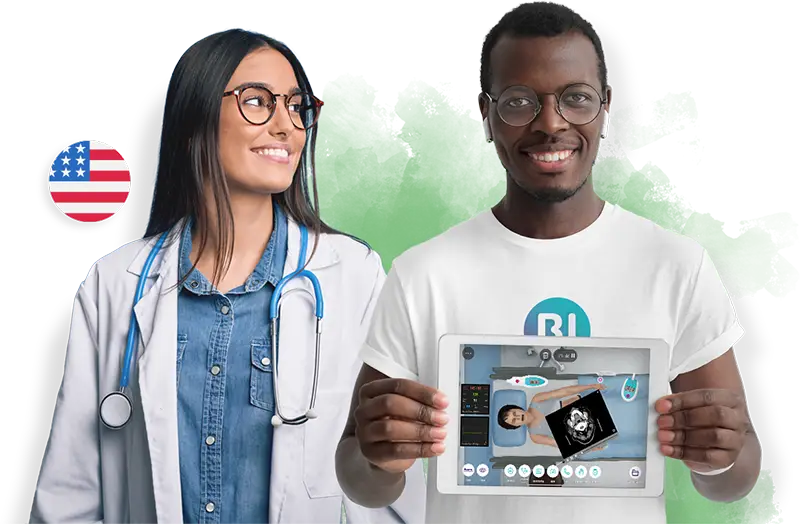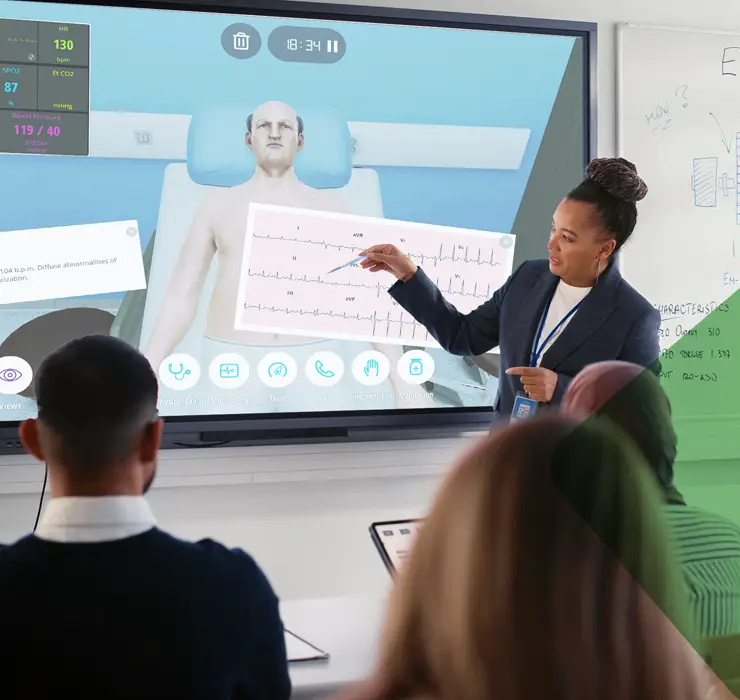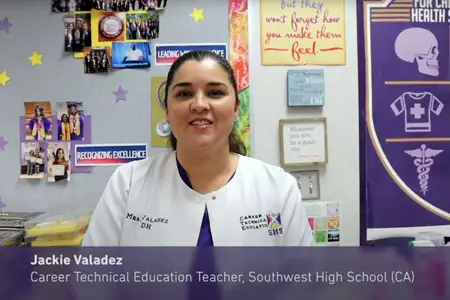
Bring Innovation into Health Care Careers
Foster students’ critical thinking and teamwork skills with Virtual Patients. Modernize traditional Health Science Education and meet industry needs.
Why applying
Securing funding is essential to implementing, sustaining, and expanding Career and Technical Education (CTE) programs in health sciences. Access to funds for purchasing advanced equipment or enhancing existing services can significantly impact student engagement and educational outcomes.
Explore the numerous grant opportunities that can support your program’s needs. They are available from a variety of sources, including state, local, private, and non-profit organizations.

Funding Sources for Health CTE Programs
To assist you in navigating various funding options, the Body Interact team has compiled a list of potential sources, along with specific examples. Please note that the most suitable funding opportunities will vary depending on your state and local community.
This list is intended to serve as a guide, providing insights on where to begin your search and who to contact within your community to secure these vital resources.
Carl D. Perkins (Basic Grant)
Federal funds are allocated annually to each local education agency (LEA) based on a federal formula. These funds are distributed by the LEA to CTE programs for program improvement and expansion (not for program maintenance or consumables).
Within the federal funding framework, there are discretionary grants available, totaling $26 million. These include the Innovation and Modernization Program, Native American and Technical Education Program, and Native Hawaiian Career and Technical Education Program.
Grants.gov can help you find grants and understand the federal grant process.
CTE Operations & Maintenance
State legislative funds are provided for teachers to cover consumables, materials, and supplies. These funds may be used for materials, supplies, textbooks, or any resources related to CTE student instruction. The amount varies annually based on the number of teachers in the state. With approval from the State Department of Education (SDE), multiple teachers can pool O&M funds to purchase larger items needed for student instruction.
Local Education Required Maintenance
Local funds may be used for supplies, books, and equipment maintenance. In states like South Carolina, these funds can be used to purchase items for labs, including virtual reality programs.
Workforce Development Grants
Workforce Development Grants provide funding to advance innovative and best practices in career and technical education, focusing on local workforce development needs. The specifics of these grants are determined by state legislatures or local district requirements.
Rural Technology Education Grants
These grants fund projects that bring technology into STEM classrooms. Requirements and funding levels vary by state and are not available to private or charter schools.
When a new school building is constructed, specific line items in the construction budget are often allocated for purchasing hardware (e.g., smart tables) and software (e.g., Body Interact).
Other Grants and Funding Opportunities
In addition to the well-known grants, there are others such as Simulated Workplace Grants (Federal), Career Preparedness Grants (State & Private), and Credentialing Grants (Federal & Private).
Individual states may offer funding opportunities tailored to their specific needs (e.g. Idaho Modernization CTE Funding).
Private and nonprofit organizations also provide funding, including local workforce development agencies, large regional hospitals (such as Ochsner Health in Louisiana), and local civic groups like the Elks Lodge or Rotary Club. Each situation is unique, and funding solutions should be tailored accordingly.
Schedule a meeting
Request a Body Interact demonstration, pricing, and contract details

Body Interact for Health Science Programs
Discover our Virtual Patient Simulator, an eligible classroom resource for grant funding opportunities
-
Career readiness – Explore the roles and responsibilities of different healthcare professionals. Foster interdisciplinary training in a safe and controlled environment
-
Knowledge consolidation – Train students to identify and manage common emergencies, building a strong foundation for their future health careers
-
Active learning – Bring a new layer of realism, emotions, and reflective practice into your classroom. Apply medical terminology, interpretation of vital signs, critical thinking, and problem-solving
-
Real-time feedback – Work on the step-by-step processes of clinical education. Understand the importance of assessment, communication, interaction, planning, and evaluation of a patient’s status
-
Teachers training – Access continue support and on-demand training. Maximize the software’s potential and implement cutting-edge activities aligned with the curriculum
-
Curriculum integration – Explore the extensive library of virtual patients with relevant and diverse clinical situations aligned with the National Health Science Standards set by NCHSE





